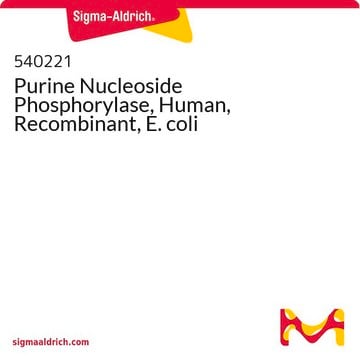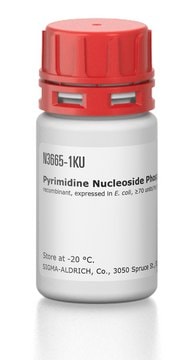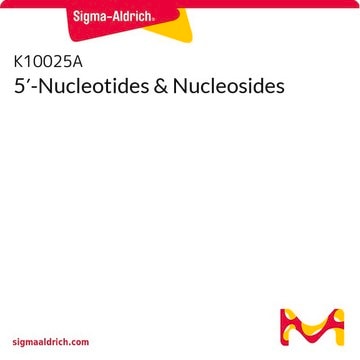N9914
Polynucleotide phosphorylase from Synechocystis sp.
recombinant, expressed in E. coli
Sinónimos:
PNPase, Polyribonucleotide Nucleotidyltransferase
About This Item
Productos recomendados
origen biológico
bacterial (Synechocystis sp.)
Nivel de calidad
recombinante
expressed in E. coli
descripción
Histidine tagged
Análisis
90% (SDS-PAGE)
formulario
solution
actividad específica
≥500 units/mg protein
mol peso
85 kDa
técnicas
cell based assay: suitable
idoneidad
suitable for molecular biology
aplicaciones
cell analysis
Condiciones de envío
dry ice
temp. de almacenamiento
−70°C
¿Está buscando productos similares? Visita Guía de comparación de productos
Descripción general
Aplicación
Acciones bioquímicas o fisiológicas
Definición de unidad
Código de clase de almacenamiento
12 - Non Combustible Liquids
Clase de riesgo para el agua (WGK)
WGK 1
Punto de inflamabilidad (°F)
Not applicable
Punto de inflamabilidad (°C)
Not applicable
Certificados de análisis (COA)
Busque Certificados de análisis (COA) introduciendo el número de lote del producto. Los números de lote se encuentran en la etiqueta del producto después de las palabras «Lot» o «Batch»
¿Ya tiene este producto?
Encuentre la documentación para los productos que ha comprado recientemente en la Biblioteca de documentos.
Los clientes también vieron
Nuestro equipo de científicos tiene experiencia en todas las áreas de investigación: Ciencias de la vida, Ciencia de los materiales, Síntesis química, Cromatografía, Analítica y muchas otras.
Póngase en contacto con el Servicio técnico











